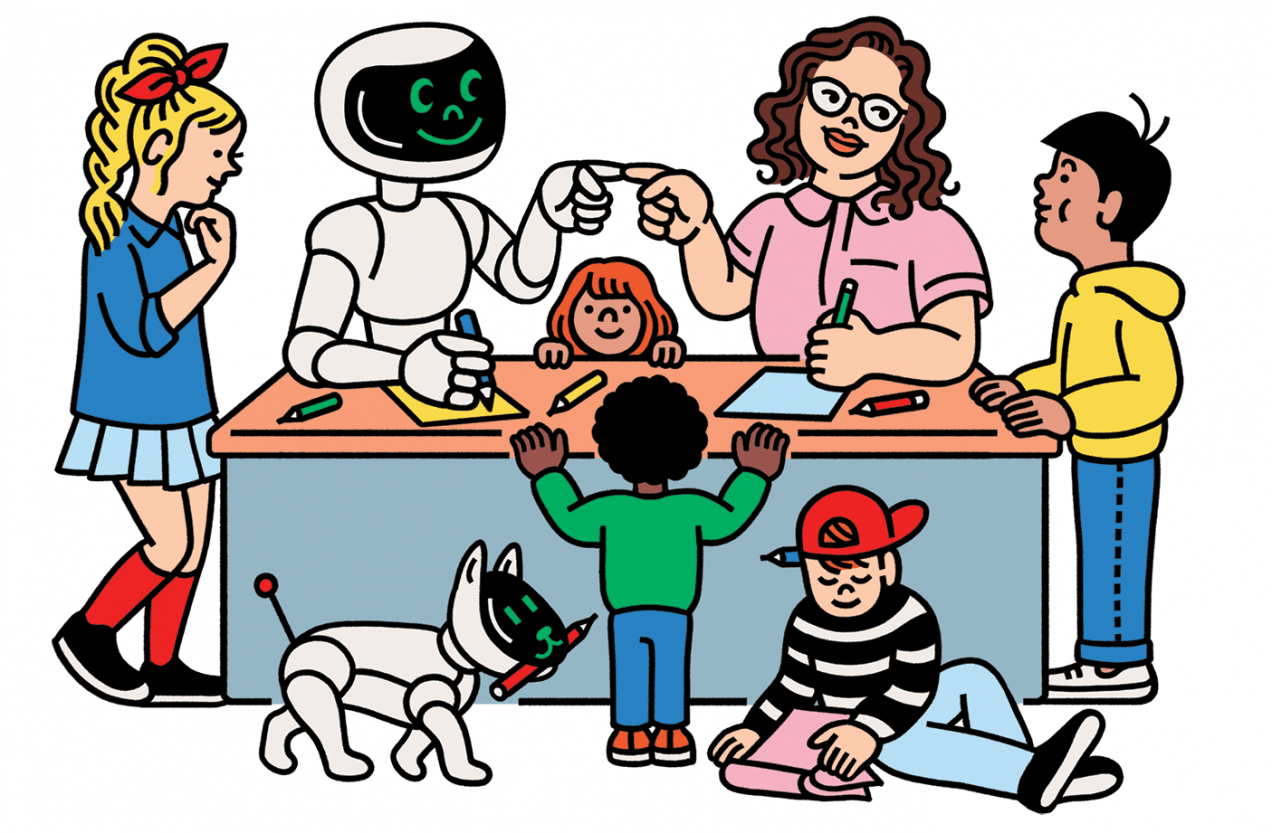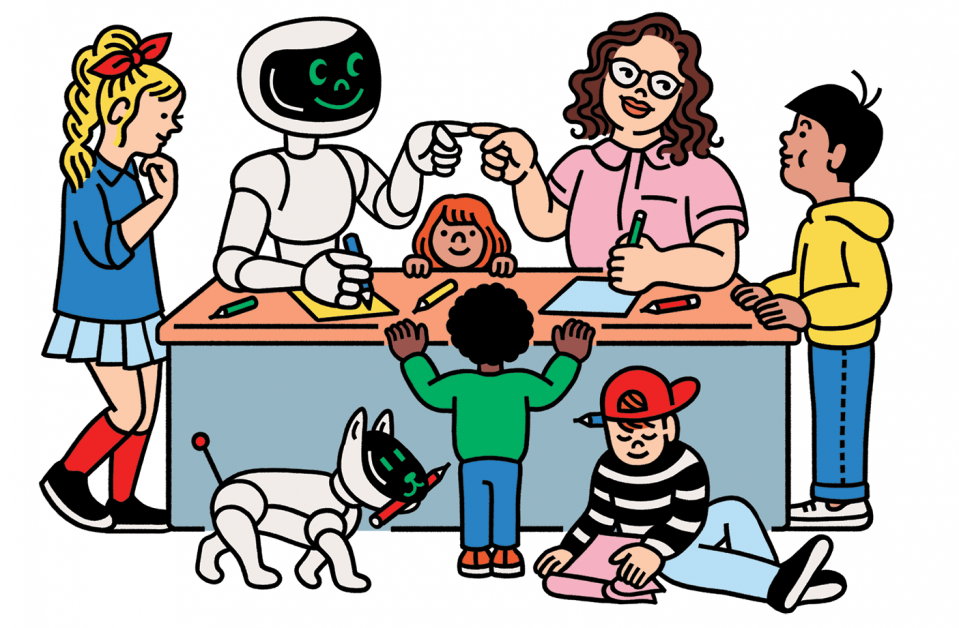

Artificial Intelligence
Play this bingo game with your kids to teach them about AI
Designed at MIT and tested by kids ages 9 through 14, it builds off research that shows how exposing kids to technology fosters their interest in STEM.

About this game
Artificial intelligence is all around us. But we often don’t notice how much it’s incorporated into the different aspects of our lives. This game challenges you and your kid(s) to notice. Designed by Blakeley H. Payne, a researcher at MIT, AI bingo builds on pedagogical research that shows how exposing kids to the way technology works helps develop their interest in STEM and improve their job prospects later on in life. It is also part of a broader curriculum designed for and tested by students from 9 to 14. The full curriculum can be found here.
A quick crash course on AI
AI is made of three parts: a data set, a learning algorithm, and a prediction.
- A data set is a collection of curated data. It doesn’t have to be just numbers! It can be images, amounts of time, numbers of YouTube views, all the texts and emojis you’ve ever sent, or even video and audio recordings. All of these contain valuable information about how people—and the world around them—behave.
- An algorithm is a set of instructions that turns something (an input) into another thing (an output). A sandwich-making algorithm, for example, would turn a bunch of ingredients (bread, peanut butter, and jelly) into a delicious lunch (a PB&J sandwich).
- The AIs we use daily are learning algorithms. They “learn” to write their own instructions for turning inputs into outputs—but first they need a teacher. An email spam filter, for example, learns to identify spam by looking at lots and lots of examples. Then it can predict, when shown a new email, whether it’s spam or not.
Instructions for kids
Instructions for adults
Print out all of the materials below these two paragraphs, with each bingo card on a separate paper and the list of data sets & predictions on a third. Pass out the bingo cards to the separate teams and keep the list for yourself. It will serve as both the answer key and the bingo calls.
Along with every data set and prediction, you will see the task that it corresponds to on the Bingo boards. Read out the data set and prediction pairs at random (but not the task itself!) and have the players fill in the tile they think it belongs to. The first of the two teams to correctly fill out five tiles in a row, diagonal, or column wins.
Data sets & predictions
TASK: Get a forecast from a weather app
DATA SET: what the weather was like in the past
PREDICTION: what the weather will be like in the future
T: Send a voice-to-text message
D: transcribed audio of people talking
P: transcription of your audio message
T: Search for something on Google
D: past links you’ve clicked on in Google
P: which search results you’d want to see first
T: Have Google autocomplete your search query
D: past searches of people who share your interests
P: your full search after you type the first word
T: Have a writing assignment graded by a computer
D: examples of graded writing assignments
P: the grade a new assignment deserves
T: Use “safe search” on Google
D: examples of websites that are safe and unsafe
P: new websites that are safe and unsafe
T: Get a suggested email response on Gmail
D: people’s responses from past email exchanges
P: a response you might give to a new email
T: Use a Snapchat filter
D: examples of people’s faces
P: where to paste glasses on your face
T: Play a motion-sensitive video game on Nintendo or Wii
D: examples of different motions that correspond with actions in a video game
P: the action you’re trying to take when you make a motion
T: Replace letters, like “lol,” with a suggested emoji
D:what each emoji could mean
P: the best emoji to replace what you’ve texted
T: Receive a product recommendation on Amazon
D: the products people have bought together in the past
P: a product you might like with what you just bought
T: Have an email go to your spam folder
D: examples of emails that are or aren’t spam
P: whether a new email is spam
T: Click on an Instagram ad
D: the Instagram accounts people follow and what they buy
P: what you might buy based on who you follow
T: Have a news app suggest an article
D: the news articles you’ve read in the past
P: the news articles you may like to read
T: See a suggested ad on Snapchat
D: the Snapchat accounts people follow and what they buy
P: what you might buy based on who you follow
T: Have your words autocorrected in a text
D: examples of how people misspell words
P: the word you’re trying to spell
T: Listen to a recommended song on Spotify
D: past songs that you’ve listened to
P: new songs you may like
T: See a recommended product on Facebook
D: the Facebook posts people engage with and what they buy
P: what you might buy based on posts you engage with
T: Get “nudged” to respond to an email on Gmail
D: how quickly people have responded to emails in the past
P: how quickly you should respond to an email
T: Use your face to unlock a device
D: images of your face
P: whether a face is yours
T: Use a map app to find a path to a destination
D: how long it historically takes to get from point A to B
P: the shortest commute from point A to B
T: Use an app like Shazam to identify a song
D: examples of what songs sound like in noisy environments
P: the name of a song playing in a noisy environment
T: Communicate with a customer service bot
D: the most helpful answers to past customer questions
P: the best answer to your question
T: Have an email labeled as “important”
D: examples of emails that are or aren’t important
P: whether a new email is important